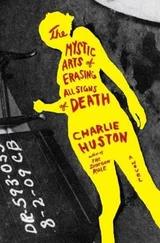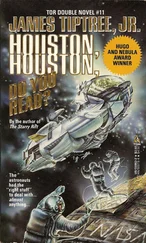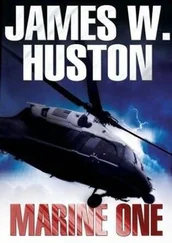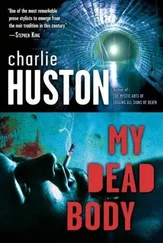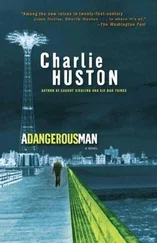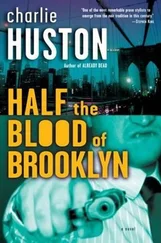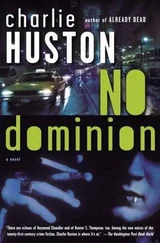“Everybody except Stamp and Lips,” Luke replied.
“Stamp’s coming?”
“Yep. And get this: Who knows what Stamp’s doing right now?”
“Some air show thing?” Pug asked.
“Yep. He’s flying a plane that has smirnoff vodka painted on the side. Anybody know what kind of plane?”
“Seventeen.”
“Yep. A MiG-17. He and his partner own two of them. They fly them in air shows. Hot deal, but not quite like flying as a TOPGUN instructor in MiG-29s. He’ll be here next week.”
“Is he quitting the MiG-17 thing?”
“Nope. He’s going to do that on the weekends. He’s going to live in San Jose, where he’s based, and commute here in his MiG.”
“What?” Sluf asked.
“As I told most of you when you checked in, including Sluf, if you want, you can commute to work here in your own airplane. We have plenty of ramp space, and it means you can live anywhere nearby that you want to,” Luke said. “You can commute here every day if you want, in your own biplane or Learjet. Whatever you want.” He watched them nod. “So now let me get going. Welcome! Thanks for agreeing to be part of this new school. I can’t tell you how excited I am about it, and after talking to each of you, I know you are as well. It is one of the most exciting developments in fighter aviation in twenty years.
“We have six weeks to get ready for the first class. The demand from international Navies and Air Forces is enormous. We’ve received calls, letters, e-mails, faxes from all over the world asking for space in a class. Brian Hayes, our intel officer, whom many of you know…” He pointed. Hayes was sitting at the duty officer’s desk, and raised his hand. “Brian is also our acting admin officer. He’s the one in charge of school quotas, student enrollment, clearances, and the like. Ever since the Nevada Fighter Weapons School Web site went active, he’s been getting thousands of hits a day. Word is out.
“Another thing that has surprised me is the demand within U.S. forces. TOPGUN’s tough to get into. But an awful lot of pilots want to go, and an awful lot of squadron commanders want their pilots to go. We all know that. And since they changed the setup at TOPGUN, where squadrons don’t send their pilots through until they’ve completed their squadron tour, the squadrons don’t get any immediate benefit from sending anyone through the school. Well, here we’re going back to the old model, where squadrons send a pilot or two in a given year, and they return to their squadrons to teach the other pilots what they’ve learned. What I didn’t anticipate, at least not at the demand we’re seeing, was that the DOD would spring for the money to send them.”
He went to a slide in his PowerPoint presentation. It was a picture of their MiG-29s sitting outside the hangar with their new angular, choppy desert camouflage and the black star markings. “One thing driving the demand, frankly, is the fact that we fly MiG-29s. Everyone wants to fly against a MiG-29. Some of you may recall back in 1999 when the German Air Force brought six MiG-29s over to Red Flag, at Nellis. They were the prettiest girls at the dance. Everybody wanted to know everything they did, how they did it, their specifications, their maneuvering diagrams—everything. Demand has, if anything, increased since 1999. In six weeks we start meeting that demand.”
“You think we can actually be ready in six weeks?” Sluf asked. Sluf had joined them from the Forest Service. After his tour as a TOPGUN instructor, instead of flying for the airlines he’d gotten a job flying tanker planes to fight forest fires.
“Sluf, I really appreciate your participation in this meeting. As a reward”—Luke smiled—“I’d like you to be in charge of facilities. Hangars, foreign object damage walk-downs, roads—all that good stuff.”
Sluf put his head back and rolled his eyes. His black hair reflected the light because of the hair gel he always wore. He laughed. “I get it. The first dissent is met with the assignment of a shitty little job?”
“Welcome to the Navy,” Luke replied.
“This isn’t supposed to be the Navy!” Sluf protested.
“No, seriously, I really appreciate you volunteering for that difficult job. As to your question, we will be ready. We’re going to have to work eighteen-hour days six days a week. We’ll take Sundays off because I think it’s smart to rest. When September first comes around, we’ll have sixteen fully trained instructors, a syllabus in place, the airspace reserved, and we’ll be ready to go.
“We’ll take two weeks off before the second class, which, I am proud to report, is also full. We expect to fill up every class for the whole year before January one.”
Pug, one of the instructors who’d been flying 767s for Delta three weeks before, was troubled. “This whole thing turns on keeping these MiGs flying. What do you know about MAPS? Can they pull this off?”
Luke looked at Vlad, who was sitting in the back listening to every word. “Vlad, why don’t you talk about maintenance for a minute? Most of you have met him, but this is Vladimir Petkov, a former Russian MiG-29 instructor who now works for MAPS.”
“What’s his call sign?” Sluf asked.
Ted Bradley—Rain—jumped on that idea. “How about Commie?” He laughed.
Vlad did not laugh. He was angry. “I was not Communist. I was against Communist. To be called that would be insulting.”
“All the more reason,” Rain replied, looking around for support.
Luke was uncomfortable. He didn’t want a rift. “We may follow a lot of Navy traditions here, but call signs that insult people will not be one of them,” he said to Rain, who looked chastised. “How about we call him Vlad? That okay with you?” he asked.
“Vlad is good.”
“Good. Come up here and talk about the maintenance.”
“Good morning,” Vlad said awkwardly. His hair was plastered to his head, and those in the two front rows could smell him. They curled up their noses and looked at each other, wondering how someone who was such a hygienic wreck could know much about anything. “I’m Vladimir Petkov. We have six of the MiGs ready to go now. The other two will be finished within two weeks, and of course the two-seater has been ready. The ones that are flying are holding up good. The desert air is good for them, and everything is on schedule. They are durable airplanes, but we will certainly have failures. We expect eighty-five percent flying at any given time, and enough spare parts to have a twenty-four- to forty-eight-hour turnaround for any airplane the breaks down. I do not think we will have a problem.”
“Thanks,” Luke said as Vlad returned to his seat. “I have given each of you two notebooks. The first is the instructor’s manual with a syllabus. That’s what we will be doing between now and the first day of class. Some of you have been here and have completed a good part of that syllabus. The rest of you need to catch up and make sure that you finish it before classes start. The pilots who finish the syllabus first will act as instructors for the remainder of the syllabus for the others. It will be a large team effort, but I’m sure we can do it.
“We will be going from basic familiarization of the MiG-29 to NATOPS sign-off—which of course stands for Nevada Air Training and Operating Procedures Standardization.” He smiled, referring to the Navy NATOPS that everyone knew about, the Naval Air Training and Operating Procedures Standardization. “The reason we’re doing things the old Navy way is, even though we hated some of the Navy ways, we’re all familiar with them and we know what works.
“The second book that you have is the proposed student syllabus for our first class through the Nevada Fighter Weapons School. It is, as you can see, based on the TOPGUN syllabus. We’ve made some modifications. There isn’t much air-to-ground work. Our objective here is to teach not strike warfare but air-to-air combat. We will do a little air-to-ground, but that’s not our focus.”
Читать дальше




